There a number of gestural ways for readers to indicate interest in content on the web. They all go by different names and representations, which makes it difficult to determine the right solution for your community. Below is an examination of the available options and, hopefully, answers to all of your burning questions.
Earlier this week, I was reading Gothamist and became engulfed in an article about EMTs letting a pregnant lady die. It’s an insane story and there are a ton of comments. There are also three “likes”. This disparity—one amongst many that exist on the internet—shows that there’s something broken with “liking” content.
When you find a piece of content that excites you, you probably want to do one of these things:
- Respond to the article with a comment of your own
- Bookmark the article for later
- Share the article with someone else
- Let the author know that you enjoyed the content
When a user “likes” a piece of content, they could be doing any of the final three actions, depending on the service. In the case of Gothamist, my instinct is that people “like” content because they want to tell the author and other readers that it was interesting and that they’d like to see more like it. Assuming this, why didn’t more people “like” this entry?
Before I answer that question, it’s worth noting that these gestural responses are very different from other reactions to content. Commenting, replying, sharing and even reblogging all involve content creation, which is a higher level of engagement and worthy of its own discussion. I also won’t really touch on flagging (e.g., spam, offensive content) or ratings.
Language Matters
Gothamist, as well as another small site called Facebook, use the word “like” as a way to note enjoyment, but it’s conflicting for a person to “like” an article that’s about a pregnant lady dying. Am I saying I like the article or that I like killing pregnant women and their fetuses? It’s clearly not the best phrase here, even though it works in most contexts.
There are certainly other options. Here are the ones I’ve seen the most and what they might imply. These are illustrative examples that cover many, but certainly not all, use cases (if a service has a word and a symbol, I just mentioned the word).
| Type |
Services |
Definition |
Like  |
Facebook, Vimeo, Google Reader |
As discussed, it can either mean I liked reading the content or I agree with the content. Essentially, I feel happy after reading this. It’s more often used as encouragement than as a bookmark. |
Favorite  |
YouTube, TypePad, Posterous |
Similarly, this is something I enjoyed reading, but it tends to lean more towards a bookmark. |
Recommend  |
Movable Type, NYT |
I enjoyed reading this and I think you should enjoy reading it too. |
[Up/Down]  |
Reddit |
This is essentially recommend and not recommend. |
[Star]  |
Twitter, Google Reader |
This is mostly synonymous with “favorite”, but because there are no words it’s more open to interpretation. |
This is good  |
Vox |
I’ve only seen this on Vox, but I love it so I’m including it. This is back to a happy feeling and closest to “like”. |
[Heart]  |
Tumblr |
Very similar to “This is Good”. |
The interpretations may give you some insight into what is appropriate for your context. In the case of the Gothamist article, “recommend” may be the best phrase since they use this data to calculate their popular article rankings. This isn’t everyone’s goal, though.
What To Do
There’s certainly no magic bullet, but how you implement this feature should depend on what you want to get out of the data. In the end, most publishers are looking for increased page views, but the path there relies on added value for the site’s community. If you’re keeping them engaged, they’ll keep coming back, which leads us to our final list. These are the benefits of using favorites:
- A list of popular content: In addition to comments, page views, etc., you can use this to determine what content is most read on your site. This is an example of data that the publisher parses to add extra value (as opposed to the user).
- A measure for the success of your articles: You can use this metric to refine the type of content on your site and gauge the success of your writers. This is another example of publisher-driven data.
- A curation tool for users: People often just want a way to bookmark content, but it’s more often used as a way to represent who you are. There are millions of Facebook users whose identity is based solely on the items they “like” and share. This is an example where the community is making use of the data.
Really, all three use cases are valuable to publishers and users, just in different ways. The first and third are most valuable to sites that rely on user-generated content and the first two are more valuable for editorially-driven content. In the end, you should focus your efforts on what will improve the quality of and access to your content, because that’s why people visit your site.
Some Additional Notes
If your site is very upfront about its purpose, the language becomes less important. For sites where the homepage is a list of most popular content (e.g., Digg, Reddit), most users will click the button with the intention of promoting content to that list.
It’s also worth mentioning that sites often have two ways to provide gestural feedback, which can cause confusion and frustration. If you look at Twitter’s new retweet functionality, the inability to add your own comment essentially turns this into another way to favorite. It may show up in your user stream instead of a separate page, but it’s the same feature. Google Reader has two gestural responses: like and star (in addition to share and share with note). It seems like they’re just throwing the kitchen sink at the problem.
Finally, there’s the issue of site-specific jargon. Digg is the only site I can think of that does this with any success. Creating a new verb is not worth the overhead I would never recommend this unless your name is Kevin Rose.
I encourage you to comment with additional use cases and examples of usage in various services. I’d love to see as many examples as possible.
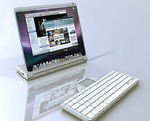
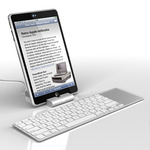
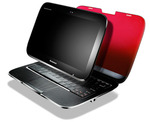
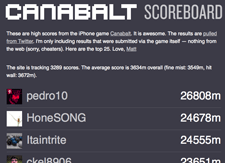
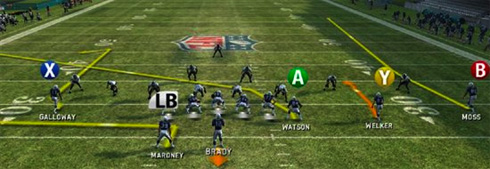
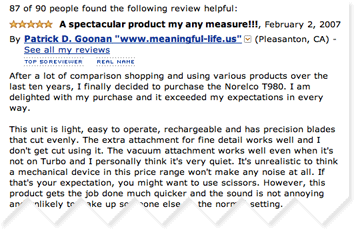

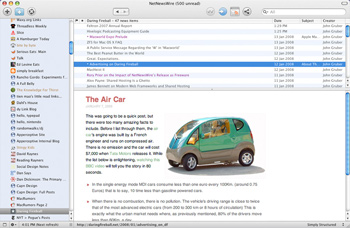 After putting together Simply Structured and years of hearing people gripe about the dearth of style in feed readers, I've realized my biggest request for NetNewsWire, or any reader for that matter, is customized styles for each feed. Even more, I don't just want the end-user to be able to customize styles, but for the author to be able to push styles alongside their content.
After putting together Simply Structured and years of hearing people gripe about the dearth of style in feed readers, I've realized my biggest request for NetNewsWire, or any reader for that matter, is customized styles for each feed. Even more, I don't just want the end-user to be able to customize styles, but for the author to be able to push styles alongside their content.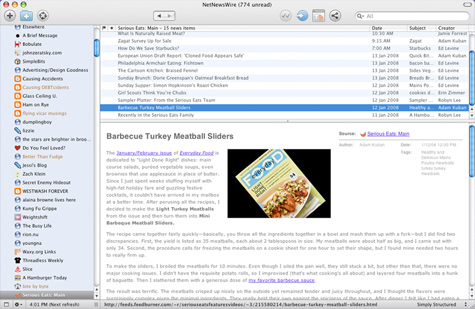
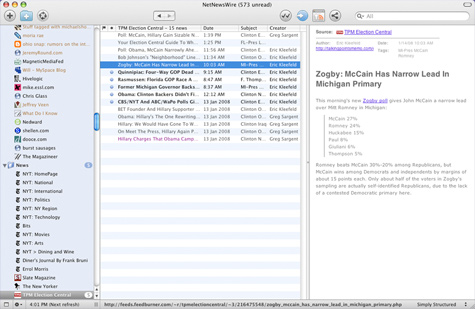
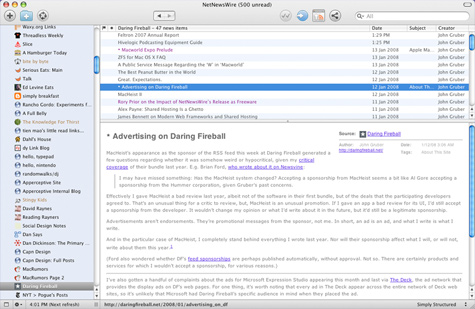
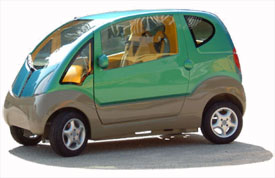 This was going to be a quick post, but there were too many amazing facts to include. Before I list through them, the
This was going to be a quick post, but there were too many amazing facts to include. Before I list through them, the